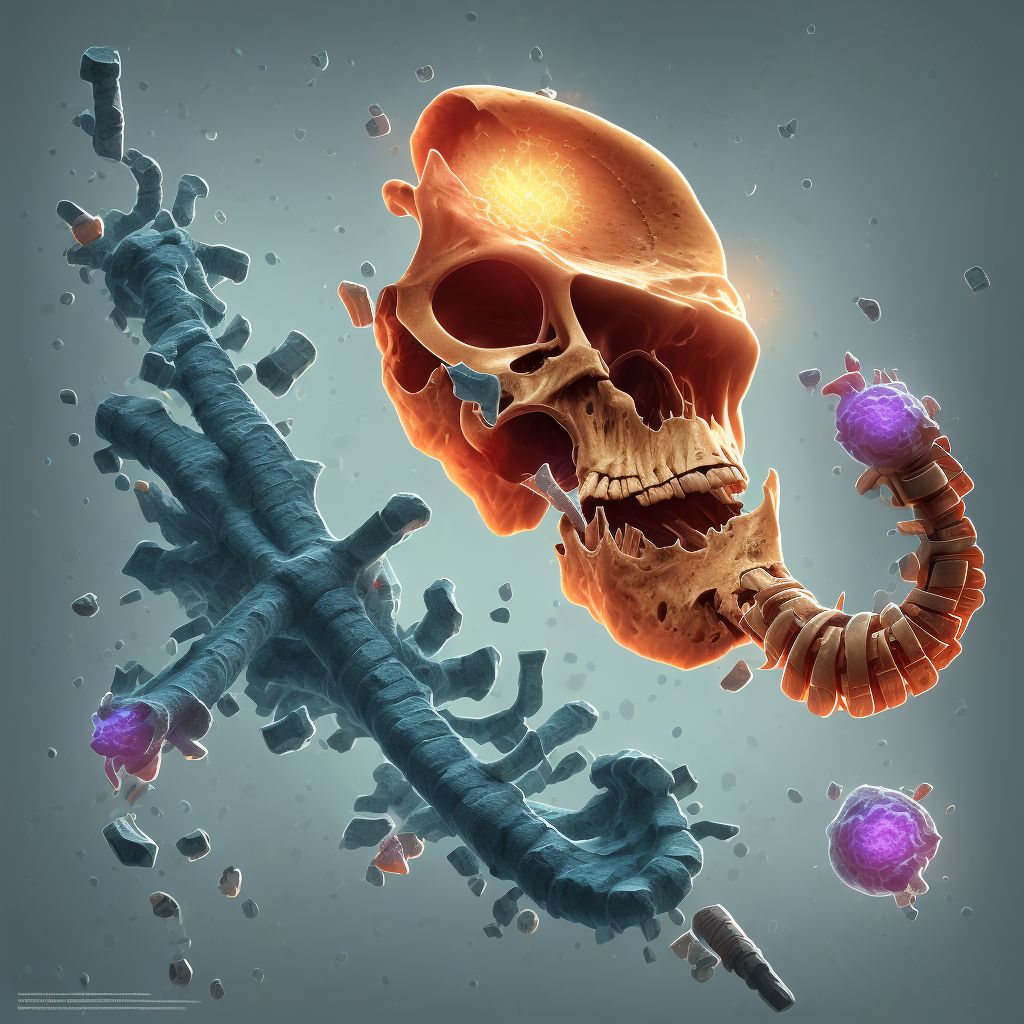
Nondisplaced oblique fracture of shaft of unspecified tibia, sequela Save
ICD-10 code: S82.236S
Disease category: S82.236: Nondisplaced oblique fracture of shaft of unspecified tibia
Nondisplaced Oblique Fracture of Shaft of Unspecified Tibia, Sequela
A nondisplaced oblique fracture of the shaft of the tibia refers to a type of fracture that occurs along the long bone in the lower leg, specifically the tibia. This article discusses the sequela, or the condition resulting from such a fracture, without focusing on treatment options. Understanding the nature of this fracture and its effects can help individuals gain insights into their condition and seek appropriate medical attention.
When an oblique fracture occurs, the bone breaks in a diagonal pattern. In the case of the tibia, this fracture may result from trauma or excessive force applied to the leg. While the fracture is classified as "nondisplaced," meaning the bone segments remain aligned, it can still cause significant discomfort and complications.
Common symptoms of a nondisplaced oblique fracture of the shaft of the tibia include pain, swelling, and difficulty bearing weight on the affected leg. These symptoms can vary in intensity depending on the severity of the fracture. It is important to consult with a healthcare professional to accurately diagnose and assess the specific sequela associated with this type of fracture.
Unfortunately, without proper treatment, the sequela of a nondisplaced oblique fracture of the shaft of the tibia can persist. This may include chronic pain, limited mobility, and an increased risk of future fractures in the affected area. Seeking medical attention is crucial to prevent long-term complications and promote proper healing.
- Pain management: Healthcare professionals may recommend pain medications or non-pharmacological interventions to alleviate discomfort.
- Physical therapy: Engaging in targeted exercises and rehabilitation techniques can help restore strength, flexibility, and range of motion.
- Weight-bearing restrictions: In some cases, individuals may need to limit or avoid putting weight on the affected leg to prevent further damage.
- Monitoring and follow-up: Regular monitoring and follow-up appointments with a healthcare professional are essential to track the healing process and address any concerns.
If you suspect you have a nondisplaced oblique fracture of the shaft of the tibia, it is essential to consult with a medical professional for an accurate diagnosis and appropriate treatment. Remember, seeking timely medical attention can significantly impact your recovery and minimize the sequela associated with this fracture.
Treatment of Nondisplaced oblique fracture of shaft of unspecified tibia, sequela:
Treatment Options for Nondisplaced Oblique Fracture of Shaft of Unspecified Tibia, Sequela
When it comes to a nondisplaced oblique fracture of the shaft of an unspecified tibia, sequela, proper treatment is essential for a successful recovery. This type of fracture occurs when the bone breaks at an angle, but the fragments remain in their normal alignment. Let's explore some treatm...
To see full information about treatment please Sign up or Log in